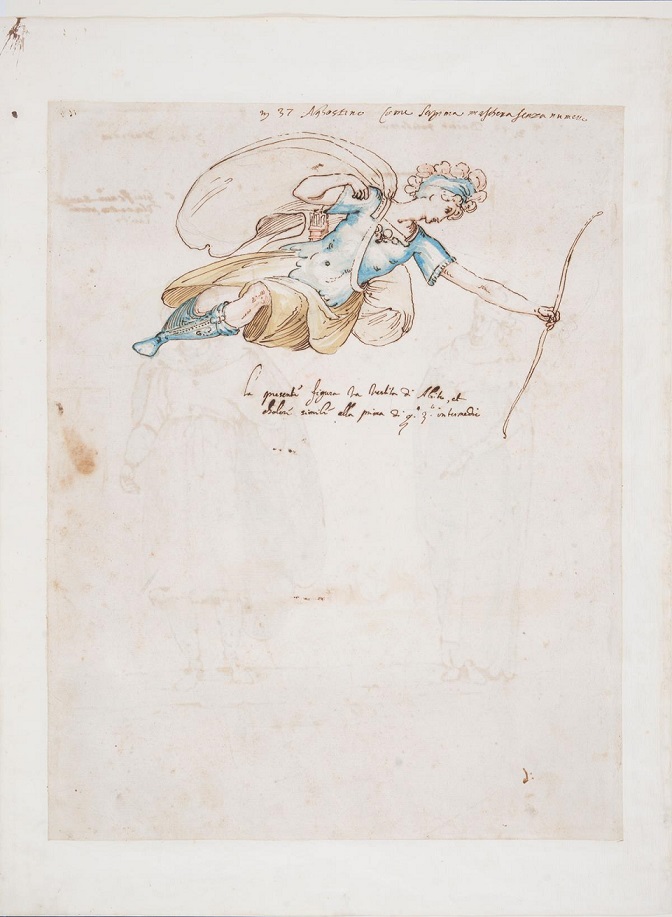CURRENT Athens is an online platform for the non-hierarchical promotion of contemporary art.
20 July - 16 September 2023
(closed 5 - 25 August)
Wednesday - Saturday, 17:00-21:00
The Municipal Theatre of Piraeus hosts a Rodeo production, Dafne Phono by Nour Mobarak.
Dafne Phono is an interspecies performance installation of the first opera, Jacobo Peri and Ottavio Rinuccini’s La Dafne, first performed in 1598. The characters of Dafne, Apollo, Venus, Cupid, Ovid, Python and the Chorus are here reprised mostly by monumental or large-scale mycelial sculptures staged as a tableau and “singing” through speakers embedded in their bodies. Drawing parallels between biological processes and the structures of language, this work furthers the artist’s research into the analogies between speech, repetition, decay, civilisation, power, and metamorphosis.
The first opera was inspired by the possibility of transforming speech into music, and Dafne Phono extends this experiment by providing each of the main characters with its own language. Four of these languages — Abkhaz, San Juan Quiahije Eastern Chatino, Silbo Gomero, and !Xoon — are selected for the richness of their morpho- phonology, with the aim of creating an opera with the widest possible palette of human vocal sounds. Italian and Latin link this new polylingual version of the libretto to Rinuccini’s original (which survives Peri’s music, now lost).
The plot is based on Ovid’s account in the Metamorphoses. Cupid punishes Apollo for boasting of his conquests by shooting two arrows: the first makes him fall in love with Dafne, daughter of the river god; the second makes Dafne revile him. When she escapes his pursuit by transforming into a laurel tree, Apollo turns the wreath that he is left clutching into an enduring symbol of triumph. Dafne, after all, must remain trapped in the tree beneath which Apollo plays songs of love on his lyre.
The myth’s themes of silencing, subjugation and conquest are applied, in Dafne Phono, to more recent histories of language and domination. While Apollo speaks in the original Italian, the rest of the cast are provided with more phonemically complex languages. These ideas also inform the materials in which the work is realised. The biological composition of mycelium, the root form of the mushroom, is rhizomatic, repeating, and endures through cycles of decomposition and re-composition, much like human language. Its branching network of filamentous cells—called hyphae—create a dense web that go dormant, then petrify and can persist indefinitely.
Venus, Apollo, and Cupid are made from a species of saprophytic fungi that feeds on dead organic matter, reflecting the artist’s longstanding interest in how languages can be “broken down” into their constituent sounds and reassembled into different forms (an enduring preoccupation of the musical avant-garde). By a similar pro- cess, the bilingual subtitles provided here are literal translations from the languages performed in Dafne Phono, the final stage in a series of transformations that has seen the libretto moved out of Italian into English, then into the five other participating languages, and from there into English and Greek.
Languages define the systems of knowledge and cognition—and by extension the realities—in which their speakers live. Dafne Phono reflects on what is lost when they disappear or are absorbed into the increasingly hegemonic and diminished languages in which we now communicate.
Dafne Phono is commissioned, in part, by Rodeo. These sculptures were created with the generous assistance of Dirfis Mushrooms in Evia, Greece. Dafne and Chorus were produced using Dirfis Mushrooms substrate, spawn, and facilities. Some other works were set, incubated, and dehydrated on their site. This project is supported, in part, by a Foundation for Contemporary Arts Emergency Grant and by Dafne Phono’s dear friends. The sound installation component was commissioned, in part, by JOAN Los Angeles. Thanks to Onassis AiR for generously lending recording equipment, and also Genelec, MorrowSound, and Recital Program.

Drawing of one of the original costumes from the first production of Jacobo Peri and Ottavio Rinuccini's La Dafne opera, 1598.
